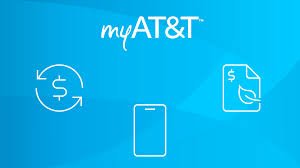When you encounter a problem with your AT&T service, whether it’s a mysterious charge on your bill or an unexpected internet outage, your myAT&T account is your first port of call for a resolution. This online portal and its companion app are designed to give you control over your account and provide a direct line to support. Here’s how you can efficiently report an issue through myAT&T visit att my results.
Getting Started: Log in to Your myAT&T Account
Before you can report an issue, you’ll need to log in to your myAT&T account. You can do this through the AT&T website or by using the myAT&T app on your smartphone or tablet. Make sure you have your user ID and password handy.
Reporting a Billing Issue on myAT&T: Step-by-Step Guide
Discovering an unfamiliar charge or an error on your AT&T bill can be frustrating and concerning. Fortunately, myAT&T offers a streamlined and user-friendly way to dispute billing issues, ensuring that you have a clear path to resolve any discrepancies quickly and efficiently. Here’s a detailed walkthrough of the process to report a billing issue on the myAT&T website.
1. Log In and Navigate to the Billing Section
First, access your myAT&T account by logging in securely with your username and password. Once logged in, head to the “Billing & payments” section, typically found in the main navigation menu. This section provides a comprehensive view of your billing history, payment due dates, and recent transactions.
2. Select the Bill Containing the Issue
Within the billing section, you’ll see a list of your recent bills and statements. Select the specific bill where you noticed the error or unfamiliar charge. You can choose either the current bill or any previous statement if the discrepancy occurred earlier.
3. Locate the Dispute Charge Option
After selecting the relevant bill, open its detailed view. Here, you will find all line items and charges broken down for clarity. Look for the option labeled “Dispute a charge” or something similar. This is usually a button or link located near the charge summary or at the bottom of the bill details page.
4. Provide Details About the Charge You Are Disputing
Once you initiate the dispute process, the website will guide you through a series of prompts. These will ask you to specify which charge(s) you believe to be incorrect. You’ll be asked to provide a reason for the dispute, such as “unrecognized charge,” “service not rendered,” or “billing error.” Be as thorough and clear as possible when explaining why you are disputing the charge to help AT&T’s support team understand the issue quickly.
5. Submit and Track Your Dispute
After filling out the dispute form with all the necessary details, submit your claim. You should receive a confirmation message or email acknowledging that your dispute has been received. AT&T will then review your case and may contact you for additional information if needed. You can track the status of your dispute by logging into your myAT&T account and checking the “Billing & payments” section or your message center.
Additional Tips:
- Keep a record of any correspondence or confirmation numbers related to your dispute to help track progress and provide proof if needed.
- If you notice recurring or multiple unexplained charges, consider contacting AT&T customer service directly for personalized assistance. For insights on flexible learning and personalized approaches, you might find MicroSchool helpful.
- Regularly review your bills to catch issues early and avoid unnecessary fees. Staying proactive about your billing can save you time and stress.
Using the myAT&T App:
The process is similar on the app. Navigate to your billing section, select the relevant bill, and look for an option to dispute a charge. The app will then guide you through the necessary steps.
For more complex billing issues, you can also use the live chat feature available on the AT&T support website and within the myAT&T app to connect with a customer service representative.
Read More – A single TV Licence covers all the devices in your home Via tvl.co.uk/notv.
Checking for and Reporting a Service Outage
If you’re experiencing a loss of internet or wireless service, your first step should be to check for a known outage in your area.
On the myAT&T Website:
- Visit the Outage Page: Go to att.com/outages.
- Sign In: You’ll be prompted to sign in to your myAT&T account.
- Check Your Address: The system will automatically check for reported outages affecting your service address.
- Get Updates: If there is a known outage, you can sign up for text message updates to be notified when the issue is resolved.
Using the myAT&T or Smart Home Manager App:
- The myAT&T app allows you to check for outages in a similar way to the website.
- For internet customers, the AT&T Smart Home Manager app is a powerful tool. It can diagnose issues with your home network, check for service outages, and even guide you through rebooting your Wi-Fi gateway.
If no outage is reported, these platforms will then guide you through troubleshooting steps to identify and resolve the problem with your specific service.
You May Also Like – Installing and Activating TurboTax with Your License Code Visit Installturbotax.com With License Code.
Getting Technical Support
For technical issues that aren’t part of a widespread outage, myAT&T offers several ways to get help. Their support website features a comprehensive collection of troubleshooting guides covering common problems across all AT&T services. If you prefer instant assistance, the “Ask AT&T” virtual assistant—a smart AI chat bubble—can answer many frequently asked questions and direct you to relevant resources.
When issues require more detailed attention, you can start a live chat with a support agent through the myAT&T portal or app, ensuring you get real-time help without needing to make a phone call. Using these tools efficiently can save you time and effort. Just as students benefit from strategies like Effective Study Tips for Hostel Students in 2025, utilizing the right resources is key to solving technical problems smoothly.

